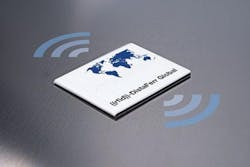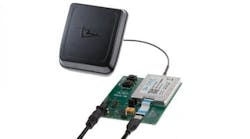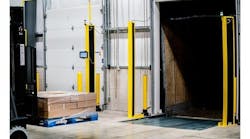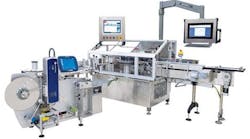Schreiner ProTech has developed an RFID label specifically designed to suit commonly used electrostatic discharge (ESD) containers. Called ((rfid))-DistaFerr ESD, the solution solves for the widespread challenge of RFID systems performing poorly on ESD containers.
As vehicle electrification sees exponential growth, the automotive industry finds itself shipping and warehousing even more electronics, electronic control units, sensors and antennas – which, in turn, leads to increasing reliance on ESD containers, and the necessity of tracking them via RFID. The automotive sector uses RFID, for instance, on returnable transport items (RTI) for end-to-end data acquisition of electronic components across the entire supply chain.
Clearly, the future belongs to containers equipped with RFID labels that allow for complete bulk data reading, ensure end-to-end batch tracing on container level, and enable optimized empties management by means of real-time inventory information using special containers made of ESD materials. This is because the transportation of electronic components poses serious risk of electrical charging, and even minimal friction or induction can destroy a printed circuit board (PCB).
But while ESD containers dissipate electrical charges to protect the components they contain, they come with an inherent disadvantage: Conventional RFID labels do not deliver optimum performance on ESD materials and their range is severely limited.
The solution: Due to the utilization of special materials, Schreiner ProTech’s ((rfid))-DistaFerr ESD labels are optimally suited for use on ESD materials. The labels offer robust protection against aggressive substances, are weather-resistant and wash-proof, and allow for onsite thermal transfer printing and programming.
For longer-distance readability, the LongRange version of Schreiner ProTech’s ((rfid))-DistaFerr ESD labels offer read ranges of up to six meters. This is important in situations where ESD containers are transported via forklift through a gate and must be bulk-readable – a scenario for which standard RFID labels are unsuitable.





